|
The Woodland Education Centre |
|
|
The Woodland Education Centre |
|
Ecological Survey 1999
Section 5 Description (Control)
Summary
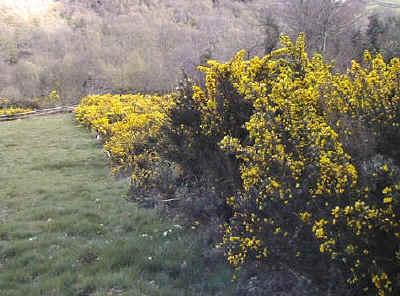 |
Section
5 has received no management at all since the beginning of experimental management
techniques on the project site in 1995. In1999, the section was dominated by European Gorse (left) with an average height of around 2 metres. The top picture shows the section in April with the gorse in full flower, while the bottom picture was taken in September. |
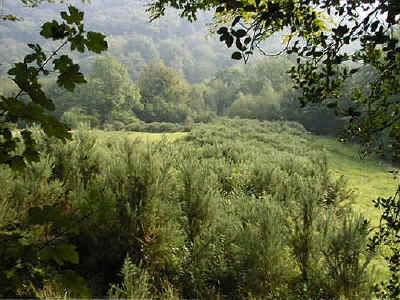 |
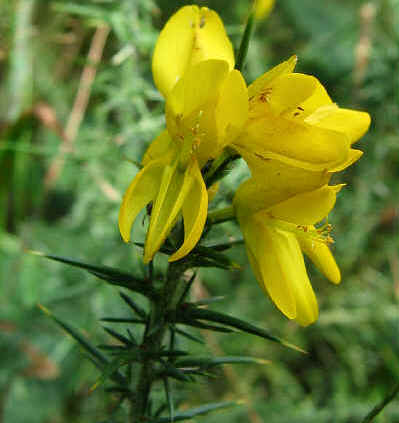 |
A small
amount of Western Gorse (left) was also present in this section in 1999. This is a less robust species
than European Gorse, rarely growing taller than about 1 metre. It can be distinguished by its smaller size and markedly downwardly curved smooth spines. (European Gorse has spines with longitudinal ridges and hairs which make them rough to the touch.) |
 |
The gorse was
interwoven with Brambles, with young Silver Birch and Cherry trees at a maximum height of
approximately 1 metre. The gorse did not completely cover the whole section. Bracken, Marsh Thistles and grasses such as Common Bent and Yorkshire Fog were common. |
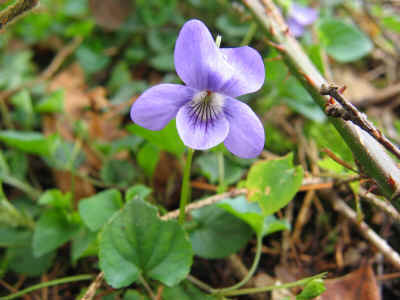 |
Clearings
in the gorse contained low growing herbs such as violets (left) and Bugle. Small patches of Heather and Bell Heather also survived in clearings, often scrambling up over other adjacent vegetation towards the light, in quite an uncharacteristic growth form. Compact Rush was common in wetter patches of the section. |
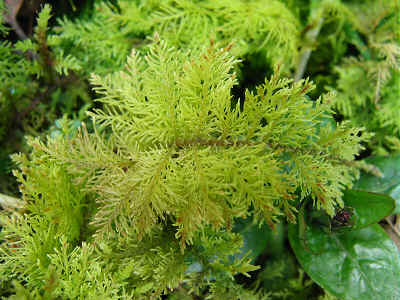 |
A number of mosses were quite common in this section, including Thuidium tamarascinum (left) and Eurhynchium praelongum. |
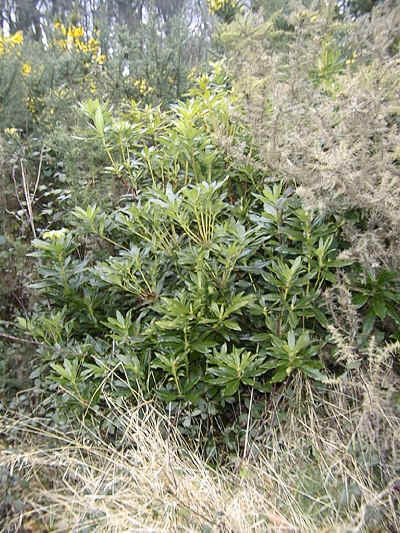 |
Rhododendron ponticum (left) a highly invasive,
non-native species which formerly covered the project site, has regenerated in places in
Section 5. Without management to contain it, this species will in time take over again completely. |
Dominant Plants in
Section 5 in 1999
with figures from 1998 for comparison.
Characteristic heath species are in bold print
| Species | Overall % frequency | Mean % Cover (all quadrats) | ||
| 1999 | 1998 | 1999 | 1998 | |
| Bramble | 92 | 92 | 47 | 36 |
| Silver Birch | 79 | 67 | 32 | 25 |
| European Gorse | 67 | 75 | 44 | 42 |
| Common Bent | 67 | 63 | 16 | 14 |
| Common Dog-violet | 67 | 71 | 10 | 14 |
| Compact Rush | 58 | 58 | 15 | 13 |
| Bugle | 46 | 21 | 8 | 2 |
| Yorkshire Fog | 33 | 67 | 10 | 15 |
| Eurhynchium praelongum | 42 | 0 | 13 | 0 |
| Thuidium tamarascinum | 29 | 20 | 10 | 5 |
| Percentage frequency = the percentage of the total number of quadrats sampled over the whole site which contain the species. For example, a percentage frequency of 100%, means that the species was found in all quadrats sampled. |
| Summary The control section, which has received no management over the course of the experiment, was dominated by European Gorse and a mixture of tree seedlings, including Silver Birch and a non-native cherry species. Brambles climbed and intertwined amongst the taller vegetation which had a maximum height of approximately 2 metres. Clearings in the taller vegetation contained grasses, violets, Bugle and a few small patches of heathers. Several mosses were common underneath the taller vegetation. Rhododendron, a highly invasive non-native species which originally covered the project site, was present in this section although not common. There was little overall change in the dominant structural vegetation of this section from the previous year, apart from a slight increase in the average height of approximately 0.8 metres. The amount of Bugle (a low growing creeping perennial herb) had more than doubled in this section since the previous year. The amount of Yorkshire Fog decreased substantially. |
>> Continue to Comparison of Dominant Grass Cover
Ecological Survey 1999 |